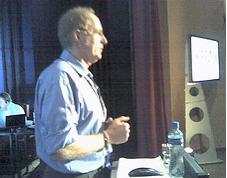Nine tips for effective e‑mails
E‑mail may seem boring, what with Google Earth, Web 2.0, Twitter, widgets, and badges, but it’s still the workhorse of online fundraising and communications. In-boxes are more congested every day, and more and more people are checking their e‑mail on cell phones and other mobile devices. So you’ve got to keep grooming your email to keep it readable and relevant.
- Written by
- Nick Allen
- Added
- June 26, 2012
Here are nine questions to ask when you’re preparing a message:

1. Is there a compelling reason to send the email? Is it urgent, interesting, funny, sad? Would you forward the message to a friend or family member? If there’s no good reason for it besides ‘it’s on the calendar’ consider taking the day off.
2. Does it have an effective ‘from’ line? Usually the ‘from’ is the name of the organisation. However, it could include the name of the signer, such as your executive director or a celebrity supporter, especially if the name of your organisation is short enough that most people can see the name of the signer and the name of the organisation in their in-boxes. The ‘from’ and the subject line are the two main ways your recipient decides whether or not to open your message.
3. Does it have an effective subject line? We all struggle over this and books have been written about it. One option for large lists is to test two or more subject lines and roll out the most opened one.
4. Does it make the point in the first vertical inch or two? Many people won’t see images—your header, wrapper, or photos—because their e-mail software turns them off. Or they may be getting your message on a BlackBerry, Treo, or mobile phone.
5. Is it easy to scan the message (since very few people will read it all the way through)? Can recipients get the idea at a glance? Are the key terms and images clear to most recipients? Remember most people don’t open most messages and, even when they do, they barely pay attention. If you say ‘plan B,’ will everyone understand you mean the morning-after pill? What about the NLRB – do they know what it is?
6. Does the headline make the offer? Does the first or second paragraph make the point and provide a link for action? Is the call-out box simple and clear, making a single point and with no more than a sentence or two at the most?
7. Is it as short as possible? Does it contain vague, unemotional language that repeats what’s already been said? Can you edit out the useless words and clichés that just slow down reading or turn people off, such as ‘unwavering support’ and ‘heartfelt tribute’?
8. Does the ask feel compelling? If it’s advocacy, does the action feel as though it can make a difference? If it’s fundraising, is it clear what the money’s for and does it seem as though the donation will make a difference?
9. Does it feel like one person writing to another? As impersonal as e-mail can be, you still want it to feel like one person’s message to another. Work with your signer to give the message a personal feel. If it’s from your executive director, can it mention something about her life? If it’s from, say, Meg Ryan, can it mention an experience she had while making a film, for instance, ‘When I made When Harry Met Sally, we were reading about the famine in Ethiopia as we shot the scenes. Now 20 years later …’
There are plenty of other tips and tricks– technical and editorial – that can help your programme. You can learn more at industry sites such as marketingsherpa.com and clickz.com, and nonprofit blogs such as The Agitator and Sea Change Strategies. You can also get my own e-newsletter at donordigital.com.
















